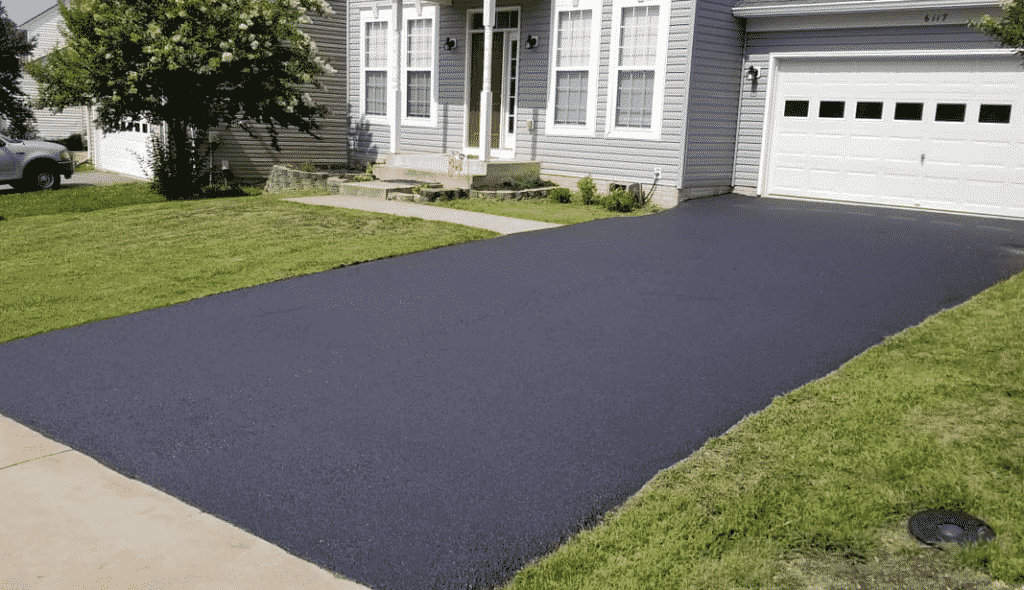How to Utilize Cold Mix Asphalt for Sturdy and Sustainable Roads
In the world of roadway building and construction, the usage of cold mix asphalt stands as an approach that holds promise for resilience and sustainability. The details associated with its application, from the thorough preparation of materials to the precise blending procedure, are crucial in attaining a premium mix. The true significance lies not just in its first application but also in the tactical maintenance methods that guarantee its durability. By delving right into the subtleties of cool mix asphalt beyond the surface, a deeper understanding arises of how this seemingly simple product can pave the means for roadways that withstand the test of time.
Benefits of Cold Mix Asphalt
Cold mix asphalt uses durable and economical options for road construction jobs - cold mix asphalt. Unlike hot mix asphalt, cold mix asphalt can be made use of in numerous weather conditions and is ideal for both permanent applications and temporary repairs.
Another benefit of cold mix asphalt is its simplicity of application. Considering that it can be stockpiled for lengthy durations without hardening, it simplifies the logistics of roadway building and construction jobs. Furthermore, cool mix asphalt does not need specific tools for blending and laying, reducing overall project prices and making it obtainable for small-scale tasks in remote areas.
Furthermore, cool mix asphalt is environmentally pleasant. Its production procedure consumes less energy contrasted to warm mix asphalt, causing lower carbon emissions. Making use of chilly mix asphalt additionally reduces the need for constant repair work, leading to less waste and reduced product intake over the life expectancy of the road.
Prep Work and Blending Refine
To accomplish optimal performance and uniformity in road building and construction using chilly mix asphalt, careful focus to the preparation and blending procedure is vital. The prep work phase includes making certain that the aggregate products are clean, dry, and free from any kind of impurities that might impact the high quality of the mix. It is crucial to properly measure and proportion the bitumen and accumulations to attain the desired mix layout.
The blending process is a vital action that considerably impacts the final high quality of the cold mix asphalt. Proper mixing makes sure that the accumulations are consistently coated with the asphalt binder, resulting in an uniform combination that uses exceptional workability and sturdiness. The mixing tools used should be capable of extensively blending the products with each other without causing excessive home heating that could endanger the properties of the mix.
Application Methods for Roadways
Achieving optimal roadway building and construction making use of cool mix asphalt requires specific application techniques that ensure uniform insurance coverage and durable resilience. When applying the cold mix asphalt, making use of the appropriate tools such as a paver can help accomplish uniform thickness and thickness. It is important to adhere to supplier specs regarding layer thickness and compaction needs to assure the longevity and performance of the cool mix asphalt road.
Upkeep Tips for Longevity
For optimal long life of roads created with cool mix asphalt, applying aggressive maintenance approaches is necessary. Normal inspection of the roadway surface area is critical to identify any type of indicators of deterioration, such as fractures or pits, which should be attended to without delay to protect against more degeneration. One efficient maintenance suggestion is to perform routine patching and securing of any kind of harmed areas to protect against water seepage and preserve the structural integrity of the sidewalk.
Along with reactive upkeep procedures, it is necessary to carry out preventative upkeep to extend the life-span of cold moved here mix asphalt roadways. This consists of normal brushing up to eliminate particles and avoid it from building up and creating damage to the surface. Applying a protective sealant or rejuvenator can help enhance the resilience of the asphalt mix and enhance resistance to ecological elements such as UV rays and oxidation.
Environmental Impact and Sustainability
The analysis of cool mix asphalt's environmental influence and sustainability includes a thorough evaluation of its carbon impact and long-term ecological effects. Cold mix asphalt uses a number of ecological benefits compared to warm mix asphalt, mainly because of its lower manufacturing temperature level. This lower temperature causes decreased power consumption during manufacturing, resulting in reduced greenhouse gas discharges. Furthermore, cool mix asphalt can be created utilizing recycled materials, look what i found further reducing its ecological effect by decreasing the demand for virgin aggregates and lowering waste sent out to land fills.
In terms of sustainability, the usage of cool mix asphalt can contribute to longer-lasting roads, decreasing the regularity of repair work and resurfacing. On the whole, chilly mix asphalt provides a long lasting and environment-friendly solution for structure and maintaining roadways with a minimized ecological impact.

Final Thought
To conclude, using cold mix asphalt for roadways provides countless benefits such as resilience, sustainability, and lower ecological effect. By adhering to appropriate preparation, blending, application, and upkeep techniques, roads can be constructed to last longer and require less power usage and greenhouse gas emissions. Implementing cool mix asphalt in roadway building jobs is a economical and environmentally friendly option for producing long lasting and lasting framework.
Unlike warm mix asphalt, cool mix asphalt can be utilized in different weather conditions and is ideal for both short-lived repair work and irreversible applications - asphalt patch repair. Additionally, cool mix asphalt does not call for specialized devices for mixing and laying, reducing overall project costs and making it accessible for small-scale tasks in remote locations
